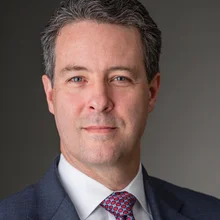
Welcome to the new Isda – more ambitious than the old one
Swaps body announces aim to expand its role from legal contracts to data and process at annual gathering
So, what are we going to do now?
Along with the rain clouds, that was the question hanging over the annual get-together of the International Swaps and Derivatives Association in Lisbon last week. (Scroll down for Risk.net’s full coverage of the event).
Isda made its name in the pre-crisis years by producing the legal templates on which the over-the-counter market’s staggering growth was founded. In the years following the crisis, having lost its long battle to prevent the market from being regulated directly, it has lobbied to constrain and change the rules, or built tools to help the industry comply.
Now, as the market wades through the last of the post-crisis reforms, Isda needs a new job. How is it going to redefine itself?
The question was answered most directly in the sessions that bookended the two-day event. In Scott O’Malia’s opening address, the association’s chief executive highlighted the operational mess created by the multiple compliance sprints the industry has undertaken in recent years.

“The focus has been on meeting deadlines, rather than creating consistency or efficiency. Now is the time for the industry to take a thorough look at the system and determine what works, what doesn’t, and how we can unlock value through efficiency. We need to be bold,” he said.
It wasn’t until the end of the event that it became clear how bold Isda plans to be. In the final session of the last day, as exhibitors packed up their stands outside, a panel of operations, tech and market structure experts from Bank of America Merrill Lynch, Barclays, Goldman Sachs, Morgan Stanley and Societe Generale took the baton and ran with it.
Common domain model
Operationally, the market is a mess, they all agreed, which limits the ability of existing participants – and the eager ranks of fintech and regtech vendors – to innovate. This mess needs to be tidied up, and the broom will be something called a ‘common domain model’.
Ayaz Haji, head of Mifid II technical architecture and data strategy at Goldman Sachs, explained the term: “For our industry, we have a set of actions, life-cycle events, products, that we, as an industry, care about and we, as an industry, exchange data about. Really, the common domain model is a single definition of those things, according to the market structures that we have.”
From inception of a trade via an order or an equiry, through to the compression, settlement or expiry of that trade, a common domain model would specify precisely what is required at each step. In other words, from its roots in standardising the legal basis for the OTC market, Isda now plans to try and standardise the data and processes required to make the market operate.
From its roots in standardising the legal basis for the OTC market, Isda now plans to try and standardise the data and processes required to make the market operate
Haji described this as “a technical enabler to get us to the technical nirvana that’s been sold to us on all these other panels. When we talk about the fintech and regtech solutions the market needs, we see this as a foundational layer that needs to be there before we start on this journey.”
As the panellists conceded, this is a simple idea that will be very complex to deliver. It will be complex, in part, because the banks that made up the Isda panel are not the only ones with an idea on how the market should work. Post-crisis regulation has separated the OTC business operationally into a series of distinct layers required to execute, report, clear and margin a trade. There are already multiple firms that occupy each of these layers.
What part will these firms be allowed to play in the common domain model? The Isda panellists sought to be disarming on this point – they would not be dictating answers to the rest of the market, they said, and invited other firms to get involved.
But as the current legal wrangle between Markit and trueEX demonstrates, the tangled complexity of OTC market structure conceals elemental questions of life and death. The common domain model, however dull it sounds, could become a lightning rod for this kind of controversy.
See below for Risk.net’s full coverage of Isda’s 2017 annual general meeting.
Isda AGM 2017 roundup

LCH warns on euro clearing land grab
Location policy would result in higher margin costs, lower liquidity, says Maguire
Swaps market’s health seen as resting on sickly repo
Panellists warn repo market is risky way to fund swaps margin
New data and AI tipped to transform trading businesses
New BNP Paribas system already creating counterparty trading probabilities for bonds
EU regulator dampens SA-CCR reform hopes
EBA acknowledges approach’s shortcomings, but warns Basel is not reconsidering
Banks urged to engage custodians in time for IM phase two
Start legal negotiations now or risk missing September deadline, warn dealers
VM repapering exercise ‘a swing and a miss’
Banks picked up big bill but few benefits, says UBS ALM exec
Giancarlo: SLR change would cut clearing capital by 70%
Netting of clearing collateral would boost activity without weakening banks, claims CFTC chair
Industry divided on case for European phase-in of FRTB
Transition period may allow time for Basel to recalibrate rules, panellists note
EU regulators prepare to close Brexit loopholes
New guidelines aim to prevent EU brass plates with large London operations
Esma wants more detail on CCP recovery plans
Regulator and industry emphasise need for effective clearing house supervision
MEP: Basel too slow to deal with clearing capital clash
Swinburne criticises Basel’s lethargy on clash between leverage and clearing rules
Euro clearing relocation ‘will inform’ US cross-border policy
CFTC’s Giancarlo says geography has been no barrier for EU CCPs in the US
FSB asks whether CCPs could become shock-transmitters
New analysis – due next month – looks at clearing network risks
Only users who have a paid subscription or are part of a corporate subscription are able to print or copy content.
To access these options, along with all other subscription benefits, please contact info@risk.net or view our subscription options here: http://subscriptions.risk.net/subscribe
You are currently unable to print this content. Please contact info@risk.net to find out more.
You are currently unable to copy this content. Please contact info@risk.net to find out more.
Copyright Infopro Digital Limited. All rights reserved.
You may share this content using our article tools. Printing this content is for the sole use of the Authorised User (named subscriber), as outlined in our terms and conditions - https://www.infopro-insight.com/terms-conditions/insight-subscriptions/
If you would like to purchase additional rights please email info@risk.net
Copyright Infopro Digital Limited. All rights reserved.
You may share this content using our article tools. Copying this content is for the sole use of the Authorised User (named subscriber), as outlined in our terms and conditions - https://www.infopro-insight.com/terms-conditions/insight-subscriptions/
If you would like to purchase additional rights please email info@risk.net
More on Our take
Hedge funds must race the clock to check their dealer-rule status
Working out whether a firm is caught by SEC registration requirement could take months
Filling gaps in market data with optimal transport
Julius Baer quant proposes novel way to generate accurate prices for illiquid maturities
Why Europe still awaits a private credit CLO
Tricky questions face managers that plan to launch the structure on the continent
The signs of tacit collusion in the dividend play trade
Game theory and real-world data point to a different understanding of how arbitrage in markets works
Decades of history says you can beat high inflation with quality
Factors such as momentum and value generally outperform the market irrespective of inflation, but new research suggests quality stocks are best when prices are rising rapidly
Esma faces tough task in implementing Emir 3.0
EU regulator must contend with tight timeframes and increasing workload without additional resources
Quants are using language models to map what causes what
GPT-4 does a surprisingly good job of separating causation from correlation
China stock sell-off will test securities firms’ risk managers
Regulatory measures to support stock market could add to risks facing securities sector
Most read
- Top 10 operational risks for 2024
- Japanese megabanks shun internal models as FRTB bites
- Top 10 op risks: third parties stoke cyber risk








